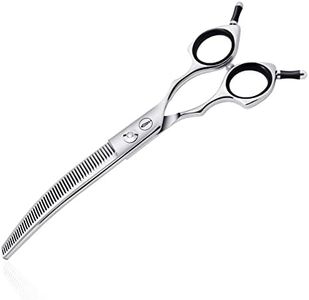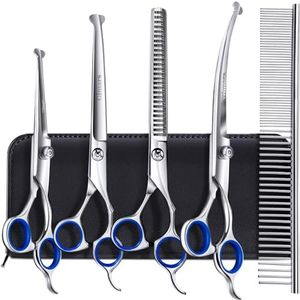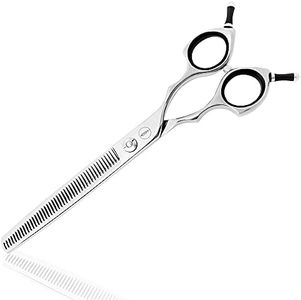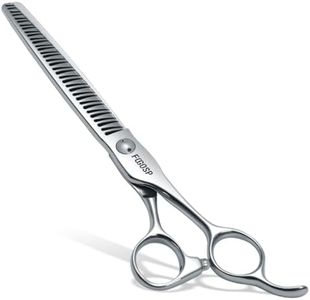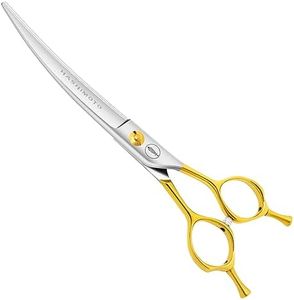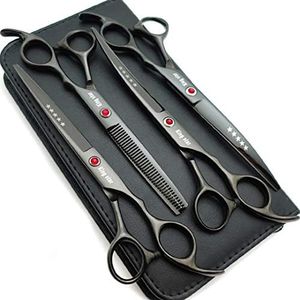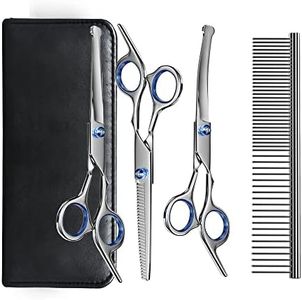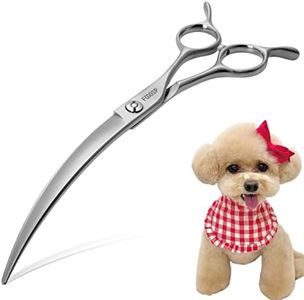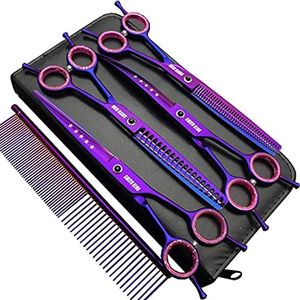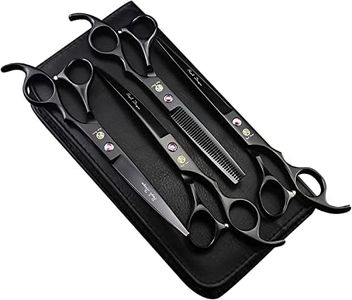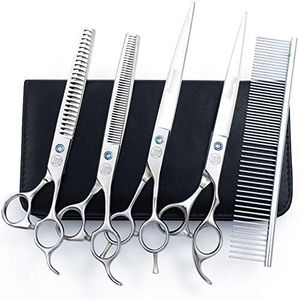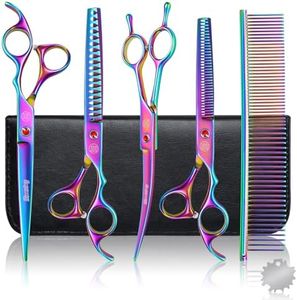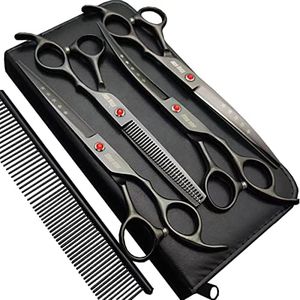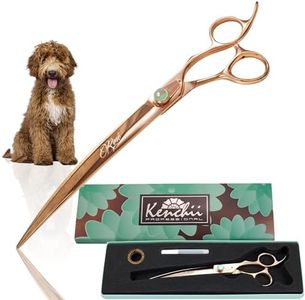We Use CookiesWe use cookies to enhance the security, performance,
functionality and for analytical and promotional activities. By continuing to browse this site you
are agreeing to our privacy policy
10 Best Dog Grooming Scissors
From leading brands and best sellers available on the web.Buying Guide for the Best Dog Grooming Scissors
Choosing the right dog grooming scissors is important for both your pet’s comfort and your own ease of use. The right scissors can make grooming safe, efficient, and more enjoyable, while the wrong ones can lead to uneven cuts or even accidental injury. Before you buy, think about your dog’s hair type, size, and how detailed you want your grooming to be. It helps to know the differences between types of scissors and the features that matter most.Blade TypeThe blade type refers to the shape and cutting edge of the scissors. There are straight blades for general trimming and shaping, curved blades for contouring around the face or paws, and thinning/texturizing blades for blending and softening thick coats. Straight blades are good for beginners and all-around cuts, while curved blades help with delicate areas and create rounded shapes. Thinning blades are great if your dog has thick, heavy fur and you want a more natural look. Choose the blade type that matches the part of the dog you plan to groom and the style you want to achieve.
Blade LengthBlade length is simply how long the cutting surface of the scissors is, usually measured in inches. Shorter blades (4 to 5 inches) give you more precise control, which is ideal for detail work like around the face, ears, and paws. Longer blades (6 inches or more) are better for cutting larger areas and making longer, smoother cuts, which saves time for bigger dogs or those with larger bodies. Pick a blade length that suits the size of your dog and the specific areas you want to groom.
MaterialThe material of the scissors, often stainless steel or other alloys, impacts durability, sharpness, and ease of maintenance. Stainless steel is most common because it resists rust and stays sharp for longer, making it reliable for repeated use. Some premium materials or coatings can make blades smoother and longer-lasting. If you groom your dog often or want scissors that last, opt for high-quality stainless steel.
Handle Design and ComfortHandle design affects how comfortable and secure the scissors feel in your hand. Look for ergonomic handles, finger rests, and soft inserts if you plan to groom for longer periods. Comfortable handles lower the chance of hand fatigue and provide better control, especially if you have arthritis or smaller hands. Choose a handle style based on how the scissors feel when you hold them and how long you’ll use them at a time.
Safety FeaturesSafety tips (rounded or blunt ends) help prevent accidental poking or cutting, which is especially important when working close to your dog’s skin or sensitive areas. If you’re new to grooming or working on small, wiggly pets, safety-tipped scissors add peace of mind. Consider this feature if your dog is nervous or you lack experience.
Adjustable Tension ScrewAn adjustable tension screw lets you fine-tune how tightly the blades move together. Proper tension helps you get smoother, easier cuts, and prevents hair from getting bent or pulled. If you want long-lasting performance and the ability to personalize your scissors, look for this feature. Anyone who’ll groom often or wants professional results will benefit from being able to set the tension to their liking.
